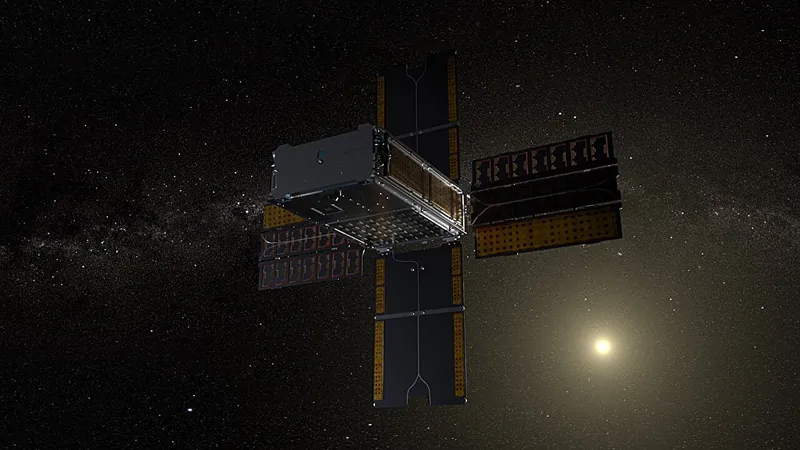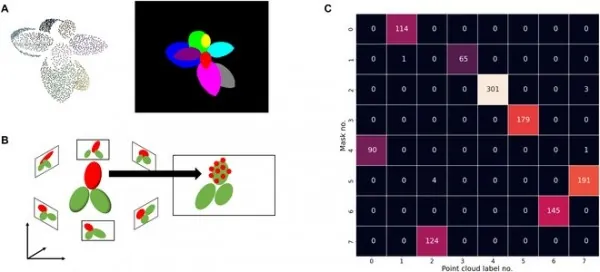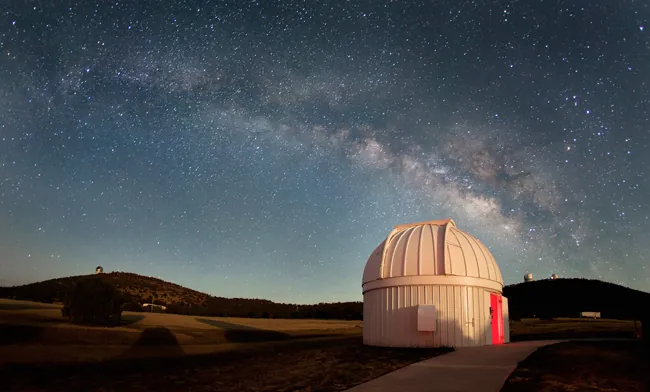
NASA's BioSentinel: Decoding Solar Radiation While Earth Dazzles with Auroras!
2024-09-27
Author: Amelia
In May 2024, Earth was treated to a breathtaking display of auroras, a phenomenon triggered by geomagnetic storms that lit up the skies across the globe. This spectacular natural light show is caused by coronal mass ejections (CMEs) from the sun, which unleash streams of plasma and magnetic energy that interact with Earth’s magnetic field—our shield against harmful solar radiation, especially during turbulent solar events.
But what happens to humans when they venture beyond this protective bubble? This pressing question looms large as NASA gears up for human missions to the Moon and Mars. During the striking geomagnetic storm in May, NASA's innovative spacecraft, BioSentinel, was on a mission to gather crucial data about the effects of solar radiation in the depths of space.
“We aimed to capitalize on the current solar cycle phase—the solar maximum—when solar activity peaks, allowing us to monitor space radiation more effectively,” explained Sergio Santa Maria, the principal investigator for BioSentinel at NASA’s Ames Research Center. “These findings are not only vital for heliophysics but also crucial for assessing the radiation risks for future manned missions beyond Earth’s protective layers.”
BioSentinel, a compact satellite roughly the size of a cereal box, is currently more than 30 million miles away from Earth, orbiting the Sun. Unlike humans, BioSentinel faced the formidable May CME without the safeguard of Earth's magnetic defenses.
Initial assessments of the data retrieved reveal that despite being an intense geomagnetic storm—a disturbance of Earth's magnetic field—this particular event was classified as a moderate solar radiation storm. This means there was not a significant spike in hazardous solar particles, suggesting that, even when unprotected like BioSentinel, terrestrial life forms were not heavily impacted.
The data gathered from this mission enhances our understanding of how solar storms travel through space and their potential effects on life beyond our planet. Although BioSentinel was originally designed to study living yeast samples in space, its mission has evolved; with those samples having expired, the spacecraft focuses on measuring the impacts of deep-space conditions on life outside of Earth's atmospheric and magnetic shielding.
The spacecraft's biosensor is continuously collecting valuable radiation data. Now, more than a year and a half post-launch in November 2022, BioSentinel is moving further into space, escalating the importance of its findings.
“While the biological objectives of BioSentinel were accomplished shortly after launch, we recognize that there is immense scientific potential in extending the mission,” noted Santa Maria. “The ongoing operation of the CubeSat and our ability to communicate with it underscore the possibilities for its use and various components in future deep-space missions.”
As we gaze up at the mesmerizing auroras, we are reminded of the invisible cosmic forces at play. With continued research from initiatives like BioSentinel, NASA and its partners are making strides in understanding the challenges of surviving beyond the nourishing embrace of Earth's protective sphere while igniting public curiosity about our ever-expanding exploration into the vast universe!









 Brasil (PT)
Brasil (PT)
 Canada (EN)
Canada (EN)
 Chile (ES)
Chile (ES)
 España (ES)
España (ES)
 France (FR)
France (FR)
 Hong Kong (EN)
Hong Kong (EN)
 Italia (IT)
Italia (IT)
 日本 (JA)
日本 (JA)
 Magyarország (HU)
Magyarország (HU)
 Norge (NO)
Norge (NO)
 Polska (PL)
Polska (PL)
 Schweiz (DE)
Schweiz (DE)
 Singapore (EN)
Singapore (EN)
 Sverige (SV)
Sverige (SV)
 Suomi (FI)
Suomi (FI)
 Türkiye (TR)
Türkiye (TR)